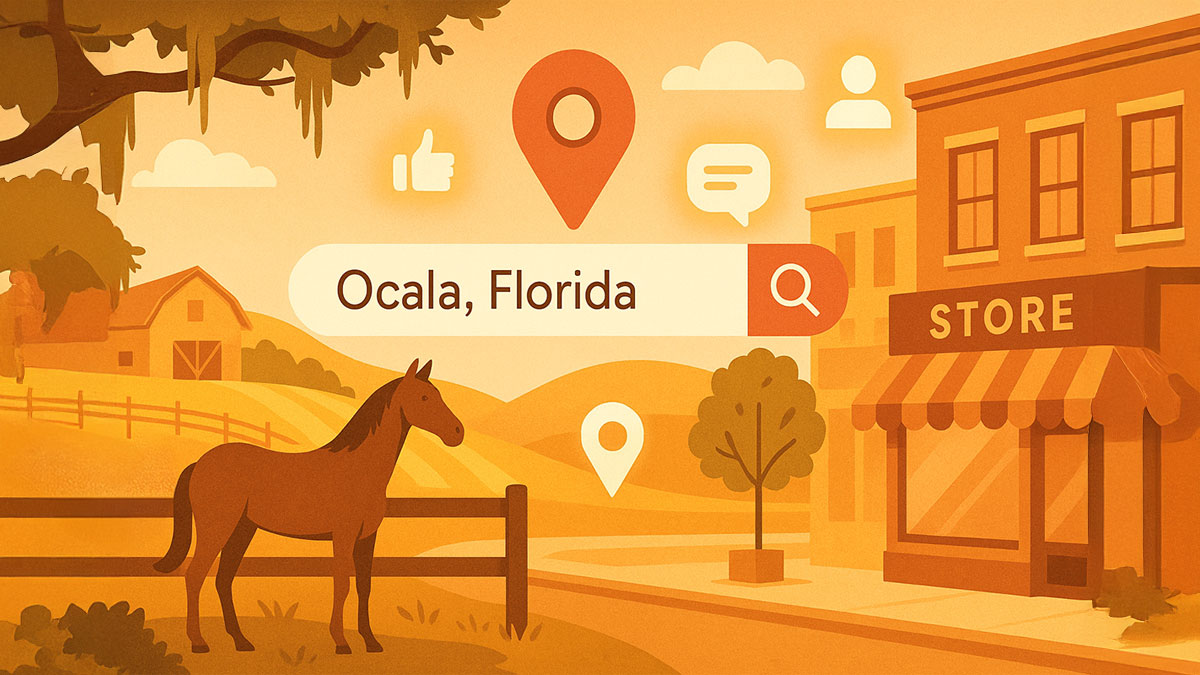Most businesses approach SEO backwards.
They chase high-volume keywords, stuff them into blog posts, and wonder why their traffic doesn’t convert.
The problem? They’re ignoring the most critical ranking factor Google cares about: search intent.
Search intent is the underlying goal behind every search query. It’s the “why” behind what someone types into Google.
Are they looking for information? Ready to buy? Comparing options?
When your content answers the right question at the right time, you don’t just rank higher, you turn visitors into customers.

In this guide, we’ll break down why search intent matters, how to identify it, and how aligning your content with user intent can transform your organic traffic and conversion rates.
The Four Types of Search Intent (And Why They Matter)
Not all searches are created equal. Understanding the four main types of search intent helps you create content that actually serves your audience.
1. Informational Intent
Users want to learn something. They’re researching, exploring, or solving a problem. Examples include “what is search intent” or “how to improve SEO rankings.” These searches happen at the top of the funnel. Your goal here is to educate and build trust.
2. Navigational Intent
Users are looking for a specific website or page. Searches like “Ahrefs login” or “HubSpot blog” show clear destination intent. If someone’s searching for your brand, make sure your site is easy to find and navigate.
3. Commercial Intent
Users are evaluating options before making a decision. They’re comparing products or services with queries like “best SEO tools” or “Ahrefs vs SEMrush.” This is mid-funnel content. Your job is to demonstrate value and differentiate your offering.
4. Transactional Intent
Users are ready to take action. They want to buy, sign up, or book something. Searches like “buy SEO audit” or “hire SEO agency near me” signal high intent. These pages should remove friction and guide users to convert.
When your content doesn’t match the intent behind a keyword, you lose rankings and traffic. Google knows what users want—and it rewards pages that deliver.
How Search Intent Affects Your Rankings
Google’s mission is simple: deliver the most relevant result for every query. That means the search engine constantly evaluates whether your content satisfies user intent.
Here’s how it works. When someone searches for a keyword, Google analyzes the SERP (search engine results page) to understand what users expect. If the top results are listicles, Google assumes users want quick comparisons. If they’re long-form guides, users want depth.
This is why Google’s Helpful Content Updates penalize content created solely for search engines. Thin, keyword-stuffed pages that don’t match intent get buried. Content that genuinely helps users ranks higher and stays there.
Think of the SERP as Google’s feedback loop. If users click your result but immediately bounce back to search again, Google interprets that as a mismatch. Your rankings drop. But when users stay on your page, engage with your content, and convert, Google rewards you with better visibility.
Bottom line: you can’t trick Google into ranking content that doesn’t serve the searcher’s goal. Matching intent isn’t optional anymore, it’s the foundation of a successful SEO strategy.
How Search Intent Drives Conversions
Rankings are great, but conversions pay the bills. Here’s where search intent becomes your secret weapon.
When you align content with intent, you attract the right visitors at the right stage of the buyer’s journey. Someone searching “what is SEO” isn’t ready to hire an agency. But someone searching “SEO audit services” is much closer to converting.
By mapping your content to different intent types, you guide users naturally through your funnel. Informational content builds awareness. Commercial content nurtures consideration. Transactional content closes the deal.
This approach also reduces bounce rates and increases engagement. When users find exactly what they’re looking for, they stick around. They read more pages. They trust your expertise. And when they’re ready to buy, you’re top of mind.
The result?
Higher-quality organic traffic that actually converts. Instead of chasing vanity metrics, you’re attracting qualified leads who are primed to take action. That’s the conversion multiplier effect of intent-driven content.
How to Align Your Content With Search Intent
Ready to optimize for intent? Follow these five actionable steps.
Step 1: Audit Your Current Content
Use Google Search Console to identify pages with high impressions but low click-through rates. These pages likely have an intent mismatch. Review your top-performing content to see what’s working and why.
Step 2: Analyze the SERP
Search for your target keywords and study the top 10 results. What format dominates? Blog posts, product pages, videos? What questions do they answer? What angle do they take? Google is showing you exactly what users want.
Step 3: Map Keywords to Intent Types
Classify your target keywords by intent. Create a spreadsheet that tags each keyword as informational, navigational, commercial, or transactional. This helps you plan content that matches user needs at every funnel stage.
Step 4: Rewrite or Restructure Misaligned Pages
If you have a blog post ranking for a transactional keyword, reformat it as a service page. If you have a product page ranking for an informational query, add educational content or create a separate guide. Align format with intent.
Step 5: Monitor and Iterate
SEO isn’t set-it-and-forget-it. Track your rankings, traffic, and conversions over time. Use tools like Ahrefs or SEMrush to see how competitors evolve their content. Continuously refine your pages based on performance data.
This process works for both new content and existing pages. Even small tweaks like adjusting your headline or adding a relevant CTA can significantly improve results when you understand user intent.
Tools and Tactics to Identify Search Intent
You don’t need to guess what users want. Use these tools to uncover intent and optimize accordingly.
Google Search Console shows which queries drive traffic to your site. Filter by page to see if your content matches the intent behind those searches. Look for patterns in high-performing versus underperforming pages.
Ahrefs and SEMrush provide keyword intent classifications and SERP analysis. Use their “Keyword Difficulty” and “Traffic Potential” features to prioritize targets. Their SERP overview tools show content types, word counts, and backlink profiles of top-ranking pages.
AI tools like ChatGPT can help classify intent at scale. Feed a list of keywords and ask the AI to categorize them by intent type. While not perfect, it speeds up the research process.
But don’t skip manual SERP reviews!
Spend time analyzing the top results for your target keywords. Read the content. Note the structure. Identify gaps you can fill. This hands-on research is irreplaceable.
Start Optimizing for Search Intent Today
Search intent isn’t a buzzword. It’s the foundation of effective SEO strategy. When you understand what users really want and create content that delivers, you win on two fronts: higher rankings and better conversions.
Stop chasing keywords in isolation. Start thinking like your customers. Map your content to their journey. Answer their questions. Solve their problems. Guide them to the solution they’re searching for.
The businesses that master search intent don’t just rank, they dominate their niche and turn organic traffic into predictable revenue.
Ready to align your content with what your audience actually wants?
Schedule a free content strategy audit with our team, and we’ll show you exactly where your intent gaps are.


